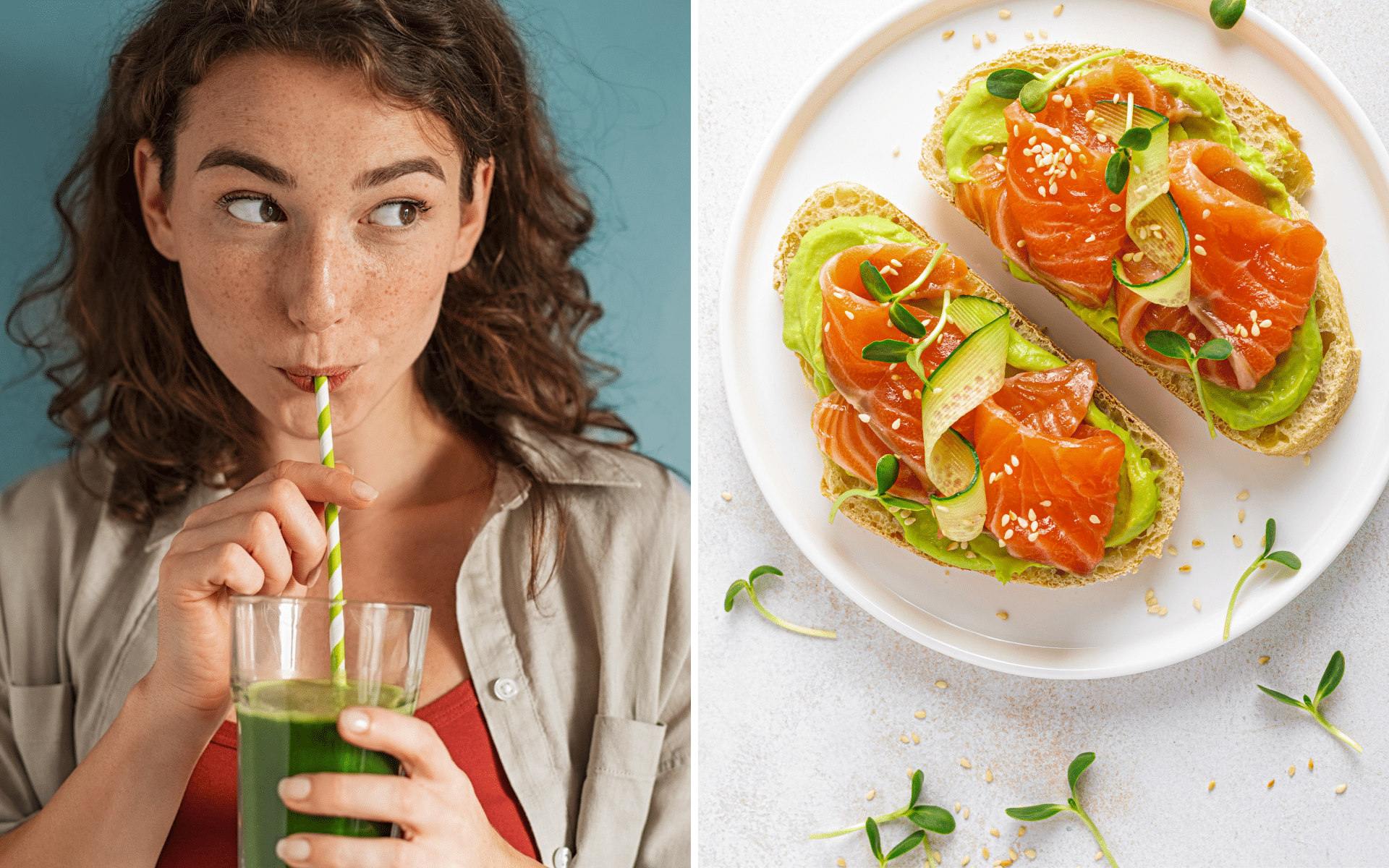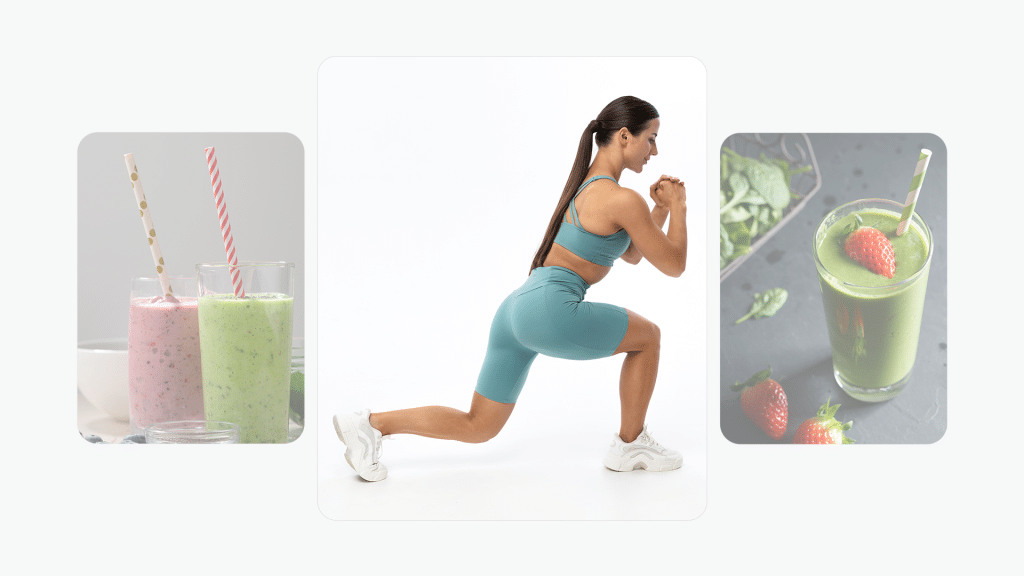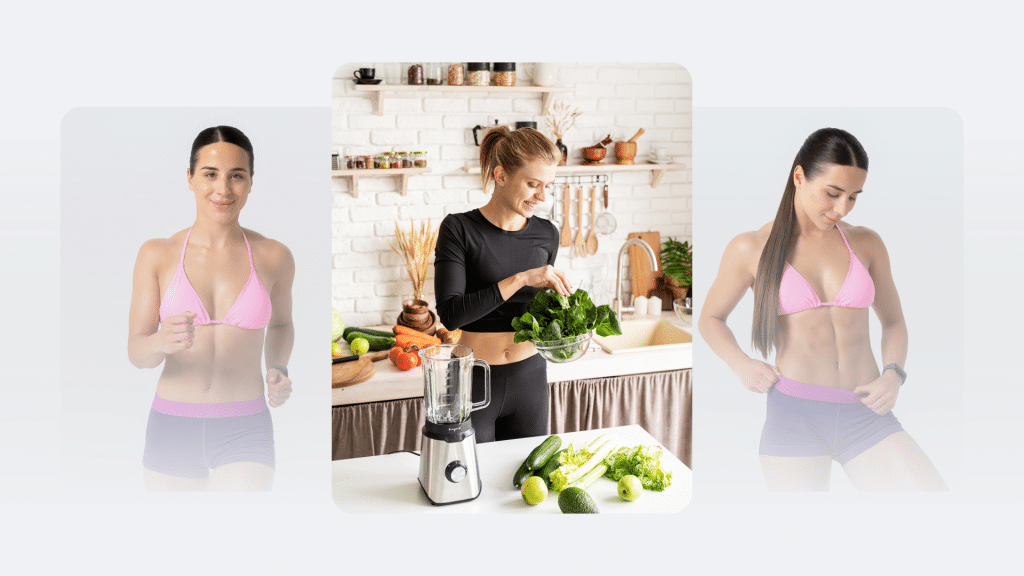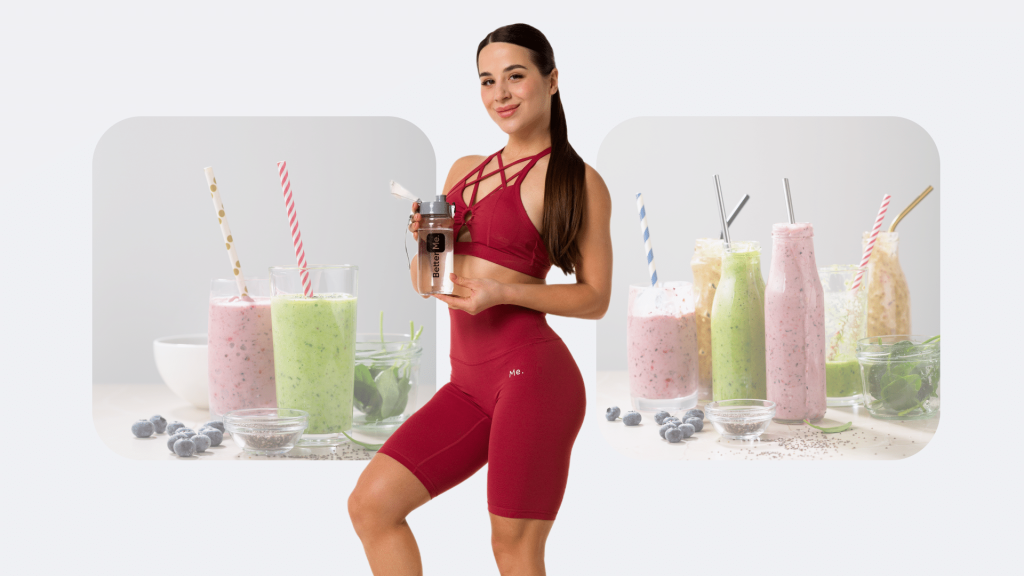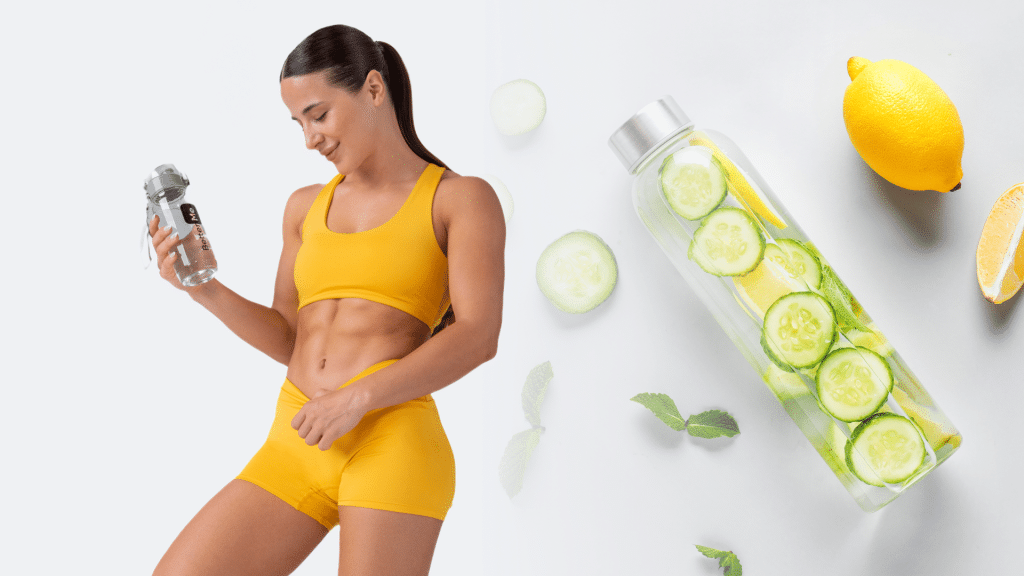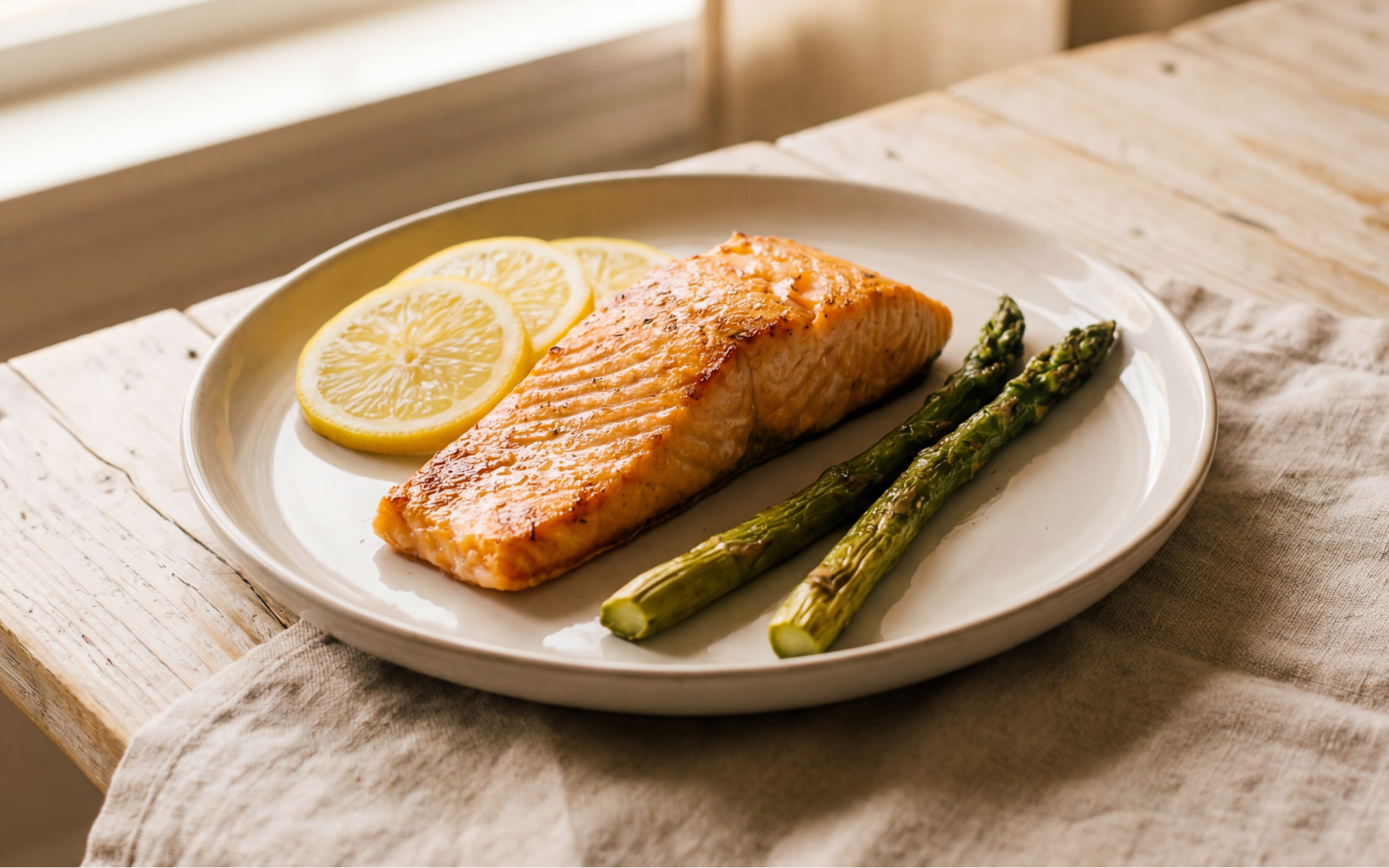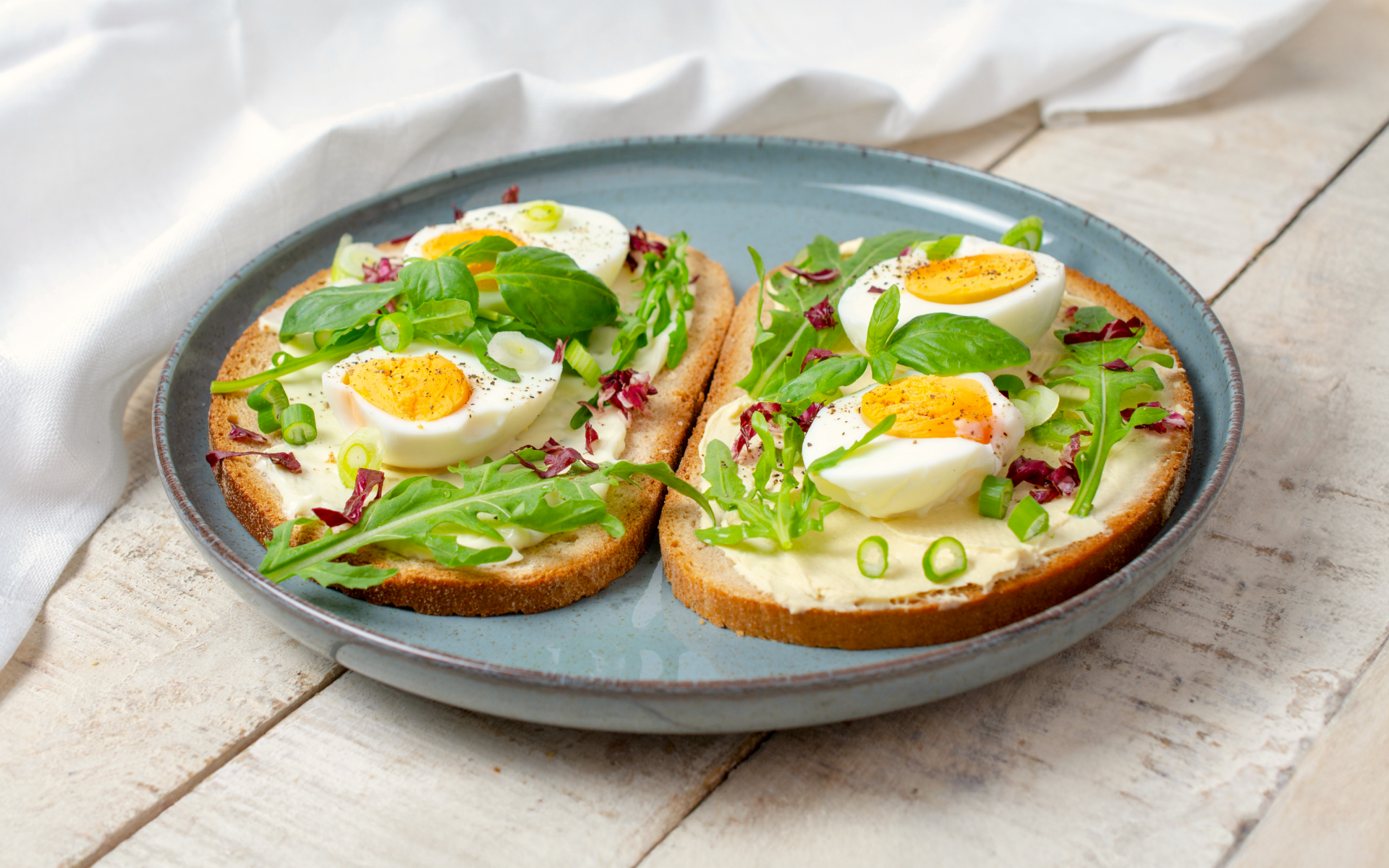Smoothies can be an excellent contributor to good health. They provide optimal nourishment from plant foods and whole foods without isolated ingredients, such as additives or food coloring. Smoothies allow you to enjoy antioxidant-rich drinks that can help with digestion or nutrient assimilation.
In this guide, we’ll explore a variety of intermittent fasting (IF) smoothie recipes. Making them is as simple as putting all the ingredients in a blender and letting the machine do the work. This article is designed to help you succeed while enjoying the many benefits healthy smoothies can provide by using quality ingredients.
When you use quality ingredients, you get a balanced concoction of healthy fats, minerals, and vitamins. They’re healthy for the gut, add flavor, and can keep you satiated. They can also be highly alkalizing, which is something many people miss in modern, acid-forming diets.
Let’s get started.
What Are Some Intermittent Fasting Smoothie Recipes?
Smoothies are versatile and customizable drinks. You can experiment with different vegetables, fruits, and other ingredients such as flaxseeds, oats, nuts, chia seeds, and herb mixes. You can add flavorings such as vanilla extract or cocoa powder for a sharper taste.
Intermittent fasting smoothie recipes usually have four main components:
- 2 to 3 cups of vegetables or fruits
- 1 to 1 ½ cups of liquid (i.e. water, coconut water, milk, juice, etc)
- ½ cup of thickener (i.e. yogurt, coconut cream, nut butter, etc)
- Ice cubes as needed
You may also include stevia, honey, or agave to make your smoothie sweeter. Depending on the rest of the ingredients, you can also add bananas, peach, mango, dates, prunes, grapes, or pineapple. They have a natural sweetness that enhances the flavor.
Add fiber (avocados, berries, oats, and seeds), protein (egg whites, milk, or whey protein), and your choice of vegetables with trace nutrients to make it more nutritious. You should opt for healthy options when choosing yogurts or fruits.
For example, you can use frozen strawberries if fresh ones are not in season. Natural probiotic yogurt with active and live cultures can be a healthier choice for fat-burning smoothies. Low-calorie options without added sugar can help support your weight management goals.
What Should I Drink in the Morning When Intermittent Fasting?
Fasting requires an uninterrupted pause in the consumption of anything that requires digestion. This includes food and caloric beverages. The idea is to let the digestive system rest and allow the body to enter a fasting state.
You can usually hydrate the body with water, black coffee, or herbal tea (i.e. green tea, black tea, white tea) during a fast. They can support metabolic processes and curb hunger. They can help with weakness and fatigue and distract you from food cravings.
The drinks you choose shouldn’t affect your insulin production, weight loss, or blood sugar levels. If you’re fasting for religious reasons, consult the religious authority in your community. In some cases, people have to even abstain from water during a fast.
Read more: Building Muscle with Intermittent Fasting: What You Need to Know
Are Smoothies Good for Intermittent Fasting?
Smoothies are a smart and healthy option for introducing nutrients to your body. They break a fast with a wealth of fiber, protein, vitamins, and minerals. You can use them as a meal substitute if you’re too busy to cook and want to lose weight.
You can improve the protein content by adding protein-packed foods such as milk, protein powders, or walnuts. Using fruits and vegetables establishes a quality nutritional balance. When you hold yourself accountable to eating balanced meals, you can lower blood pressure, and curb the risk of heart problems, and diabetes. (1)
Fiber from the fruits and vegetables that are found in smoothies can support an efficient digestive tract. It adds bulk to stool and helps food pass through the intestines. Chia seeds, berries, oats, and other ingredients can serve as a prebiotic and offer nourishment to gut bacteria. (2)
Another advantage of many fasting smoothies recipes is that they can provide quality sources of energy and protein. Smoothies that are high in protein can decrease food cravings and help with weight loss. They can prevent muscle loss and help you achieve a slimmer body. (3)
Do you want to know the type of IF that will work for you? Download the BetterMe App — your solution to nutritional mouthwatering recipes and fasting information to help you achieve long-term results. The app helps you track your food intake, make better food choices, and lose unwanted weight.
Which Fruit Is Best for Intermittent Fasting?
Many fruits have energy-boosting qualities. They are a great source of unprocessed carbohydrates, which are the preferred source of fuel for the body.
Bananas are one of the best fruits. They have natural sugars for a quick energy boost. They’re also full of potassium, a mineral that can replenish lost electrolytes and maintain muscle function. (4)
Berries can satisfy your desire for something sweet. They’re beneficial for your digestive health and energy levels. They’re often ideal to use in intermittent fasting smoothie recipes for weight loss as they’re low in calories.
Apples can energize the body. They can support your weight loss efforts, support healthy blood pressure levels, and boost gut health.
Other fruits can make a great base for your smoothie too. These include peaches, pineapple, melons, mangoes, and cherries. You can toss them in your blender and use them when you’re feeling tired and drained.
Do you want to revamp your meal plan and lose a few extra pounds? Check out our Intermittent Fasting Meal Plan Example To Help You Navigate Your Journey.
The BetterMe: Health Coaching app will provide you with a host of fat-frying fitness routines that’ll scare the extra pounds away and turn your body into a masterpiece! Get your life moving in the right direction with BetterMe!
6 Easy Intermittent Fasting Smoothie Recipes to Try
Learn to make these intermittent fasting smoothie recipes. There are a variety of options for you to experiment with to create smoothies that are to your liking.
Turmeric Pineapple Smoothie
This is a great smoothie to break a 3-day fast. It has many nutrients that can help your digestion, immune system, and weight loss. The drink has enough fiber to support healthy bowel movements and calcium to help the joints.
Calories: 330
Servings: 2
Ingredients
- 1 banana
- 2 cups frozen pineapple chunks
- 1/3 teaspoon ground ginger
- 1 teaspoon ground turmeric
- 1 cup of non-dairy milk
How to Make
Place all the ingredients into a blender and mix for about 30 seconds or until you get a thick and creamy texture.
Using frozen fruits makes the smoothie feel more refreshing and creamy. If you prefer to use fresh ingredients, you can grate the turmeric and ginger. You can also add some black pepper to increase turmeric absorption.
Kiwi Cucumber Smoothie
Many alkalizing ingredients such as cucumber can help you stay hydrated while fasting. This smoothie can help with digestion and maintaining electrolyte balance. The kiwi adds flavor and vitamin C, while the cucumber can cleanse the body.
This blend may provide anti-inflammatory properties with minimal sweetness. It can also be part of a vegan intermittent fasting meal plan.
Calories: 273
Servings: 2-3
Ingredients
- 1 cucumber
- 1 1/2 cups honeydew melon
- 2 kiwi fruit
- 1 cup spinach
- 2 teaspoons fresh grated ginger
- 2 teaspoons lime juice
- 1 cup coconut water (or plain water)
How to Make
Rinse, peel, and chop the cucumber, kiwi, and melon into bite-sized pieces. Add them with the rest of the ingredients into a food processor. Blend until you get a smooth consistency.
If you can’t drink all of it, you can store the rest in jars. It can last up to 2 days in the fridge as it’s a lighter, more water-based smoothie.
Turmeric Lemon Smoothie
This may be the best smoothie to break a fast. It’s bright and fresh with the perfect amount of citrus tang. The yogurt base gives it potent probiotics to support gut health, while turmeric can ease inflammation and stimulate natural healing.
Compared to other smoothies, this one is a bit more sour. You may want to add some frozen bananas and honey to increase the sweetness. However, if you prefer the tanginess or want to limit your calorie intake, you can skip these additions.
Calories: 87 to 256
Servings: 1-2
Ingredients
- 1/2 cup of yogurt
- 1 teaspoon fresh lemon zest
- 1 ½ teaspoon fresh ginger grated
- 1 tablespoon lemon juice
- 1 tablespoon honey (optional)
- 1 frozen banana (optional)
- 1/2 teaspoon ground turmeric
- Ice cubes to taste
How to Make
Put all the ingredients in a blender and mix until smooth. The turmeric and ginger give it a powerful taste.
You can add coconut milk to sneak in some more hydration and sweetness. It’s a versatile low-calorie ingredient that’s full of minerals and vitamins.
Whether you’re a workout beast or just a beginner making your first foray into the world of fitness and dieting – BetterMe has a lot to offer to both newbies and experts! Install the app and experience the versatility first-hand!
Berry Smoothie With Oats
Berries are an excellent addition to any diet. They are a great source of fiber, micronutrients, and polyphenols. These fruits can benefit the gastrointestinal tract and offer cardiovascular benefits too. Oats add more fiber and create a filling meal.
You can include it in your 3-day smoothie diet weight loss process. It can keep you satiated and curb food cravings. To increase your protein intake, you can use whole milk and nut butter. If the smoothie is too thick, simply add more liquid.
Calories: 267
Servings: 1-2
Ingredients
- 1 cup milk
- 1/2 cup rolled oats
- 1/2 cup of frozen berries
- 1 tablespoon brown sugar
- Ice to taste
How to Make
Soak the oats in water before adding them to the smoothie. This gives the drink a smoother texture. However, if you prefer a thicker texture and want to create a substantial meal, you can use raw rolled oats instead.
Add the ingredients to a blender for a couple of seconds until you get a smooth texture. Instead of whole milk, you can use almond milk, coconut milk, oat milk, or coconut water.
Spinach Broccoli Superfood Smoothie
If you’re looking to kickstart a 7-day smoothie fast, this recipe can detox and rejuvenate the body. The fiber content can support bowel movements. You can use it to stay hydrated and maintain a healthy weight.
Rice milk is a good substitute for vegans and vegetarians. It can deliver nutrients, strengthen the bones, and optimize digestion. It also gives the smoothie a unique taste, especially when paired with coconut kernel.
Calories: 390
Servings: 2
Ingredients
- 2 cups spinach
- 1 cup broccoli
- 2 celery sticks
- 1 banana
- 1/4 cup rice milk
- 4 tablespoons coconut kernel
How to Make
Cut the broccoli all the way through and remove the stems. Toss the small florets into the blender. Cut the celery and banana into chunks and blend them with the rest of the ingredients. You can include 1 scoop of protein powder to promote muscle-toning.
Pumpkin Spice Latte Smoothie
This is the perfect recipe to enjoy the flavors of fall and pumpkin spice. It’s an exciting smoothie with a variety of ingredients and it’s a bit on the sweet side. Although you can enjoy it during your eating window, it’s best consumed in moderation.
It takes longer to prepare, but the results are worth it. You can replace dairy milk with any number of plant-based milks and add as much liquid as you need to get the desired consistency.
The key is to use a strong coffee, preferably espresso. This can provide a quick energy boost and increase focus. You can add flavorings such as vanilla and maple syrup to take away some of the bitterness.
Calories: 267
Servings: 2
Ingredients
- 1/2 cup of coffee
- 1 frozen banana
- 1/4 cup pumpkin puree
- 1/2 cup dairy milk
- 1/2 teaspoon cinnamon
- 1 tablespoon maple syrup
- 1 teaspoon vanilla
- 1/4 teaspoon pumpkin pie spice
How to Make
Pour the coffee into an ice cube tray and let it freeze for a couple of hours. We recommend you prepare the coffee the night before you make the smoothie. Using frozen coffee cubes creates a creamier and more refreshing smoothie. If you don’t have time, you can skip this step and use regular cold coffee.
Add the coffee to a blender with all the other ingredients. Allow it to blend for a few seconds or until you get a smooth texture. You can sprinkle some seeds such as pumpkin seeds into your drink to add a bit of crunch.
Read more: 10 Plant-Based Diet Recipes for Beginners
What Not to Drink During Intermittent Fasting
Intermittent fasting (IF) creates a gap between meals and your fasting window. You often abstain from food and certain beverages for a specific time. In most cases, IF allows drinking liquids such as water, tea, or black coffee, as long as you restrict the calories and nutrients.
However, some drinks are best to avoid while fasting. These include:
- Sugary drinks: Sweetened teas, fruit juices, and sodas have added sugar. They can spike your insulin and break your fast.
- Milk and cream: Even a tiny bit of cream or milk in your tea or coffee can add enough calories to break your fast.
- Drinks with calories: Protein shakes, smoothies, milkshakes, or other meal-replacement drinks can affect your glucose.
- Beverages with artificial sweeteners: Recent research has shown that artificial sweeteners can affect your insulin response and glucose level. They can trigger gut bacteria and affect your efforts to lose weight. (5)
Is It OK to Break Intermittent Fasting with Fruits?
Some people feel incredibly tired and sometimes nauseous after breaking a fast with a hearty meal. Breaking a fast with your favorite fruit can start the process of replenishing important nutrients. Breaking a fast with fruit may often be easier on the stomach than having a high-protein meal.
Eating raw fruit such as apples, grapes, bananas, or plums doesn’t upset the digestive tract. It gently reintroduces minerals and vitamins to your intestines while also replenishing your energy.
When breaking a fast, many people find fruits to be more satisfying than a typical meal. Fruits may be a preferred choice when coming out of a fasting state, mainly due to the natural sugar content and easier bowel movements. If you prefer fruits, choose options that feel comfortable for your stomach.
Generally, fasting means abstaining from food and calories for an extended period of time. However, some products can be consumed while preserving your fast. These include water, tea, and black coffee. Bone broths can technically break the fast, but if you consume very little, you can stay in ketosis. Squeezing a bit of lemon into your water shouldn’t break your fast. It’s low in calories and highly unlikely to affect your insulin levels. However, lemonade with sugar or artificial sweeteners has more calories and will break your fast. It depends on why you are fasting. Technically, Coke Zero shouldn’t break the fast as it contains zero calories. However, if you’re fasting to improve your gut health and lose weight, Coke Zero can interfere with the results. It can trigger an insulin response and contribute to abdominal obesity. After 4 weeks of IF, you can reduce your body weight and improve your heart health and insulin resistance. Your body may also start to maintain lean body mass and boost muscle recovery while shedding unwanted fat. Your fast may also stimulate the metabolism and improve your body’s regulation of hormone production. (6)Frequently Asked Questions
What foods won’t break a fast?
Does lemon water break a fast?
Is Coke Zero allowed while fasting?
What happens after 4 weeks of intermittent fasting?
Summary
Smoothies are delicious, fresh, and fast. They are a great way to add lots of fruits and vegetables to your fasting regimen. They require minimal effort and no cooking experience. They can help you get rid of excess fat without skipping any meals. You can also use them to promote gut health and replenish the water in your body.
The trick is to incorporate quality nutrients with a good balance of minerals and vitamins. You can start with basic ingredients such as bananas or pineapple and then add a protein source and fiber. You can tailor any recipe to your needs and stay satisfied for a long period of time. Many of the nutrients you select can subdue some of the cravings and supply the body with antioxidants that promote overall health.
DISCLAIMER:
This article is intended for general informational purposes only and does not serve to address individual circumstances. It is not a substitute for professional advice or help and should not be relied on for making any kind of decision-making. Any action taken as a direct or indirect result of the information in this article is entirely at your own risk and is your sole responsibility.
BetterMe, its content staff, and its medical advisors accept no responsibility for inaccuracies, errors, misstatements, inconsistencies, or omissions and specifically disclaim any liability, loss or risk, personal, professional or otherwise, which may be incurred as a consequence, directly or indirectly, of the use and/or application of any content.
You should always seek the advice of your physician or other qualified health provider with any questions you may have regarding a medical condition or your specific situation. Never disregard professional medical advice or delay seeking it because of BetterMe content. If you suspect or think you may have a medical emergency, call your doctor.
SOURCES:
- Fruit and vegetable consumption and the risk of hypertension: a systematic review and meta-analysis of prospective studies (2023, ncbi.nlm.nih.gov)
- The Health Benefits of Dietary Fibre (2020, ncbi.nlm.nih.gov)
- Clinical Evidence and Mechanisms of High-Protein Diet-Induced Weight Loss (2020, ncbi.nlm.nih.gov)
- Potassium (2023, ncbi.nlm.nih.gov)
- Is the Use of Artificial Sweeteners Beneficial for Patients with Diabetes Mellitus? The Advantages and Disadvantages of Artificial Sweeteners (2022, ncbi.nlm.nih.gov)
- Beneficial effects of intermittent fasting: a narrative review (2023, ncbi.nlm.nih.gov)
